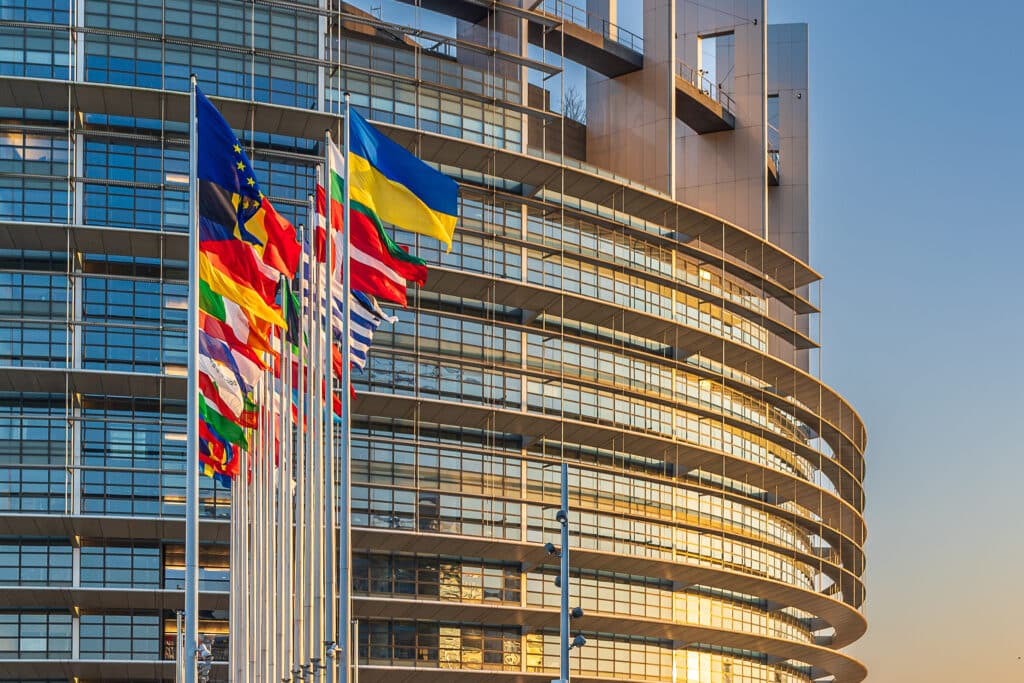Trump chaos and Merz’s economic plan: an opportunity for Europe?
- The United States under Donald Trump presents Europe with major challenges: protectionism, global warming and militarisation.
- To counter protectionism, Europe can develop a free trade strategy with Latin American countries, Canada and other global players.
- Europe must continue its decarbonisation efforts, which will give it a technological advantage and enable it to support GDP overall.
- European countries may be required to provide for their own defence, which has prompted Friedrich Merz to call for a change in the budgetary rules in Germany.
- €300bn of European savings are currently invested in the US, which will change if Europe uses these savings to its advantage in the future.
The inauguration of Donald Trump as President of the United States has caused various types of disruption. First of all, a protectionist policy with sharp increases in customs duties, the scale and scope of which are still uncertain and fluctuating. For the moment, this involves customs duties of 25% on steel and aluminium imports, and additional customs duties of 10% on US imports from China, but Trump has announced the introduction of much more global customs duties. Then there is the withdrawal of the United States from the Paris Agreement and the end of aid for the energy transition, again in the United States, with the desire to develop fossil fuels. Also, the possibility that policies aimed at sharply depreciating the dollar against other currencies may be implemented: the chairman of the White House Council of Economic Advisers, Stephen Miran, has advocated an end to the dollar’s role as a reserve currency.
There is real uncertainty about the future of the military protection provided by the United States for Europe, and many European countries have therefore decided to increase their military spending. Finally, it must be recognised that the values of Trumpist America (those defended in particular by Vice-President J.D. Vance) diverge from the values of Europe, particularly with regard to the role of religion, the definition of democracy and freedom of expression, the separation of powers between the judiciary and the executive, and the treatment of minorities.
The three main problems that Europe will face are therefore: 1) US protectionism, 2) the US decision to stop supporting the energy transition, and 3) the end of the country’s military involvement in the defence of Europe… Does Europe have the capacity to respond to these challenges?
American protectionism and the question of policies against global warming
Exports of goods from the European Union to the United States represent 2.8% of the European Union’s gross domestic product. If we add exports of goods and exports of services, we arrive at 4% of the EU’s GDP. However, there has been no question so far of putting customs duties on services. If these exports of goods from Europe to the United States are affected by protectionist measures, the solution for Europe will be to develop trade and promote a free trade strategy with Canada, Latin American countries, the United Kingdom, Southeast Asian countries and India (the United States accounts for 18% of the European Union’s exports of goods). The world of free trade, respecting the rules of the World Trade Organisation, would stand in opposition to the United States.

With regard to climate and environmental policies, Europe must continue its efforts to reduce its greenhouse gas emissions. In 2023, the European Union’s CO2 emissions reached 2.6 trillion tonnes and those of the United States 4.7 trillion tonnes. Two arguments favour the continuation of the decarbonisation effort in Europe. On the one hand, the most recent analyses show a very strong link between the planet’s temperature and the growth of global GDP (Adrien Bilal and his co-authors show that a 1% rise in the planet’s average temperature would reduce global GDP by 12%); this link is so strong that reducing CO2 emissions in Europe alone would be effective in supporting global GDP. On the other hand, other countries are realising the scale of the disruption caused by climate change (droughts, fires, hurricanes, etc.) and will have to decarbonise their economies, but with a delay compared to the decarbonisation achieved in Europe, which will therefore have a technological advantage thanks to its early response to climate change.
Defending Europe
The third problem is the need for European countries to defend themselves. This need has led the future German chancellor, Friedrich Merz, to push for a change in the budgetary rules in Germany. The limit set for the federal public deficit (0.35% of GDP) will not include the portion of military spending above 1% of Germany’s GDP. In addition, an investment plan of €500bn over 10 years is planned, centred on the renovation of infrastructures (energy, transport) and ecological transition.
Europe can increase its public spending today while maintaining an external surplus (a current account surplus), as it currently has a surplus of almost 3% of its gross domestic product. It is conceivable that Germany’s public deficit will increase by around 2 GDP points, that the military spending of all European countries could rise from 1.9% of GDP to 3.4% of GDP, which is the level of US military spending, and that this increase could be financed without difficulty using the European savings surplus.
In conclusion, it should be noted that this trend will be very unfavourable to the United States. Today, €300bn of European savings are invested in the United States; if Europe uses this savings surplus to renovate its infrastructure and increase its military spending, it will no longer be available to be loaned to the United States, which will experience a crisis in its external financing and will have to drastically reduce its external deficit, which would imply a slowdown in growth and a sharp rise in interest rates.














